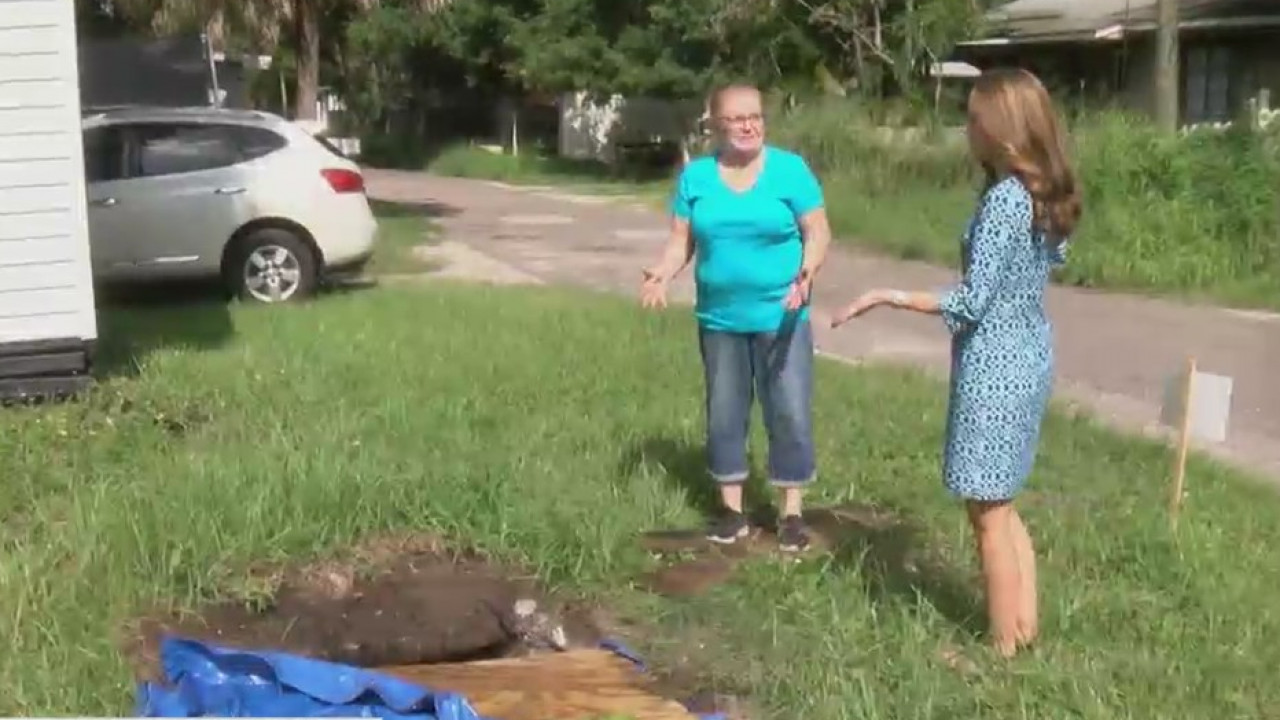Accidentally drove over septic tank – Accidentally driving over a septic tank can lead to costly repairs and potential environmental hazards. This guide explores the potential damage, safety risks, and environmental concerns associated with this mishap, providing tips for prevention and mitigation.
Understanding the structural components of a septic tank and the impact of driving over it is crucial to grasp the potential consequences. Safety hazards and environmental concerns should also be considered, emphasizing the importance of caution and awareness when operating vehicles near septic tanks.
Potential Damage to Septic Tank
A septic tank is an underground chamber made of concrete, fiberglass, or plastic that receives and treats wastewater from a home or business. It is a crucial component of a septic system, which is responsible for treating and disposing of wastewater in areas not connected to a municipal sewer system.
Driving over a septic tank can cause significant damage, compromising its structural integrity and functionality. The structural components of a septic tank include:
- Tank Body:The main chamber where wastewater is collected and treated.
- Inlet and Outlet Pipes:Pipes that allow wastewater to enter and exit the tank.
- Baffles:Internal dividers that help separate solids and liquids in the tank.
- Access Ports:Openings that allow for inspection and maintenance of the tank.
Driving over a septic tank can cause various types of damage, including:
- Cracks:Cracks in the tank body or pipes can allow wastewater to leak out, contaminating the surrounding soil and groundwater.
- Punctures:Punctures in the tank body can create holes that allow wastewater to escape or groundwater to enter the tank, disrupting the treatment process.
- Crushing:In extreme cases, driving over a septic tank can crush the tank, causing it to collapse and rendering it unusable.
Damage to a septic tank can have severe consequences for the functionality of the septic system. Cracks or punctures can allow wastewater to leak out, creating unsanitary conditions and potential health hazards. Crushing the tank can completely disrupt the treatment process, leading to raw sewage being discharged into the environment.
Safety Hazards
Driving over a septic tank poses potential safety risks to individuals and vehicles. The severity of these hazards depends on the location and depth of the septic tank.
Personal Injury
- If a vehicle drives over a shallow septic tank, the weight of the vehicle can cause the tank to collapse or crack. This can lead to the release of raw sewage, which can pose a health risk to anyone in the vicinity.
- If the septic tank is located near a water source, such as a well or river, the release of raw sewage can contaminate the water supply and make it unsafe for drinking or swimming.
Vehicle Damage
- Driving over a septic tank can damage the vehicle’s tires, suspension, or other components. The impact of the vehicle can also cause the septic tank to shift or break, which can lead to further damage to the vehicle.
- If the septic tank is located in a low-lying area, the vehicle may become stuck in the mud or water that has accumulated around the tank.
Caution and Awareness
To avoid these hazards, it is important to be aware of the location of septic tanks when operating vehicles. If you are unsure whether there is a septic tank in a particular area, it is best to err on the side of caution and avoid driving over it.
Environmental Concerns: Accidentally Drove Over Septic Tank
Damage to a septic tank can have severe environmental consequences, posing risks to both groundwater and soil.
Septic tanks play a crucial role in wastewater treatment by collecting and decomposing household wastewater. When a septic tank is damaged, raw sewage can leak into the surrounding environment, contaminating groundwater and polluting soil.
Groundwater Contamination
- Leaking sewage can introduce harmful bacteria, viruses, and other contaminants into groundwater, making it unsafe for drinking or other uses.
- Nitrate and phosphate pollution from septic tank effluent can contribute to eutrophication, leading to algal blooms and oxygen depletion in water bodies.
Soil Pollution
- Leaking sewage can contaminate soil with pathogens and heavy metals, posing health risks to humans and animals.
- Excess nutrients from septic tank effluent can alter soil chemistry, affecting plant growth and ecosystem health.
Specific Pollutants, Accidentally drove over septic tank
Examples of specific pollutants that could be released into the environment due to septic tank damage include:
- Bacteria (e.g., E. coli, Salmonella)
- Viruses (e.g., Hepatitis A, Rotavirus)
- Parasites (e.g., Giardia, Cryptosporidium)
- Nutrients (e.g., nitrates, phosphates)
- Heavy metals (e.g., lead, mercury)
Prevention and Mitigation

To prevent accidents, it’s crucial to implement proper signage and ground marking around the septic tank area. Additionally, educating drivers about the location and importance of septic tanks can help minimize the risk of damage.
Mitigating Damage
In the unfortunate event of accidentally driving over a septic tank, immediate action is necessary to mitigate the damage. Contacting a professional for inspection and repairs is highly recommended.
Steps to Take in Case of Accidental Damage
- Cease all water usage to prevent further damage.
- Contact a septic tank professional for immediate inspection and repairs.
- Document the incident, including photos and details of the damage.
- Consider notifying your insurance company if necessary.
Question & Answer Hub
What are the signs of a damaged septic tank?
Cracks, punctures, or crushing on the tank, foul odors, slow drainage, and pooling water around the tank can indicate damage.
What should I do if I accidentally drove over my septic tank?
Stop driving immediately, inspect the tank for damage, and contact a professional for repairs. Do not use the septic system until it has been inspected and repaired.
How can I prevent driving over my septic tank?
Mark the location of the tank with stakes or flags, install ground covers or pavers over the tank area, and educate drivers about the location of the tank.